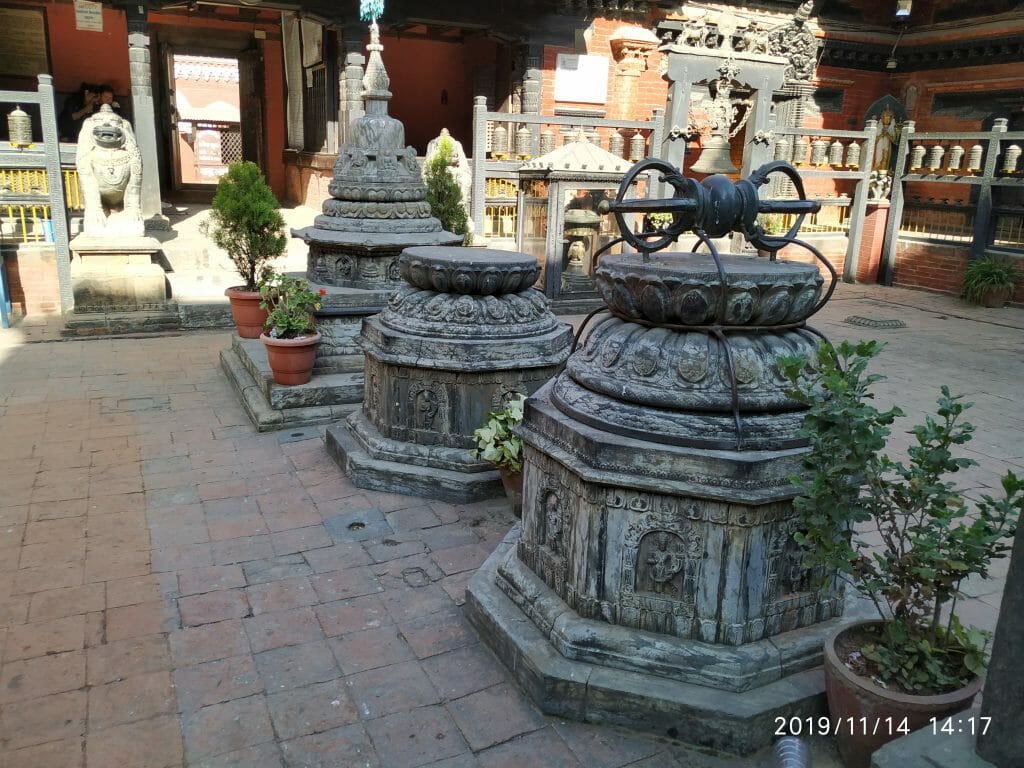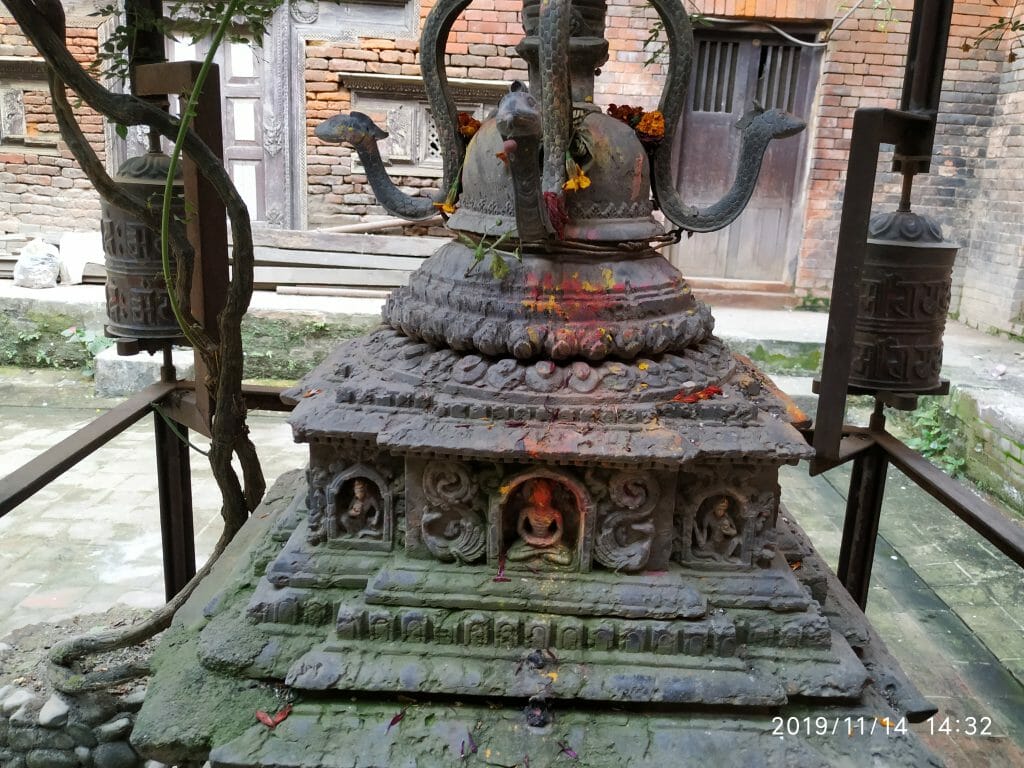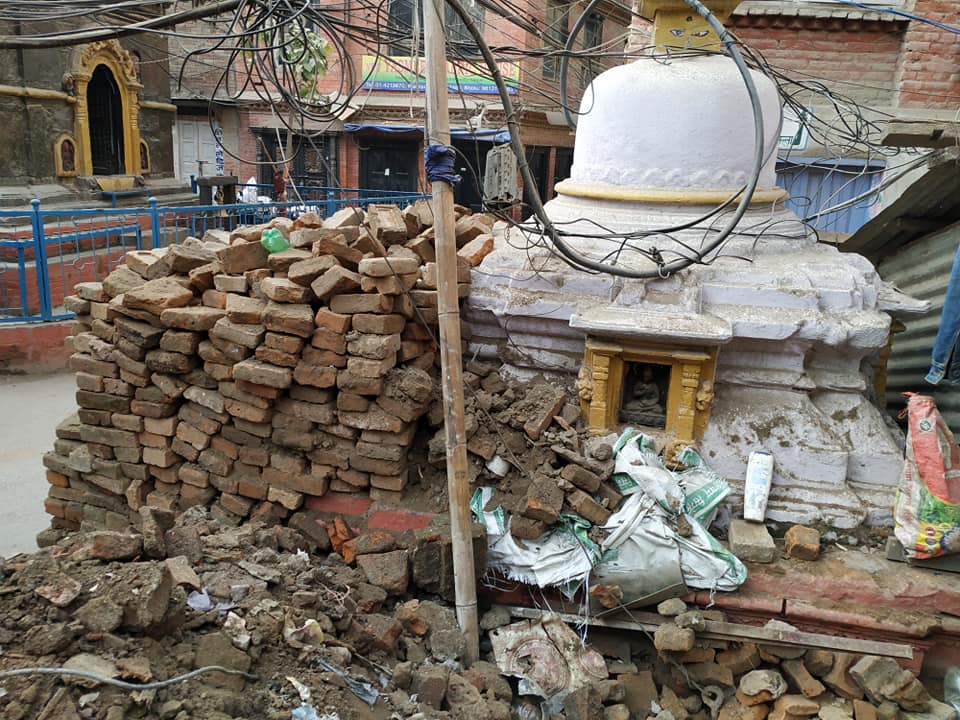Chiva Chaitya of Kathmandu Valley
When you walk or drive in Kathmandu valley (cities of Kathmandu, lalitpur, Bhaktapur and surrounding areas), we feel like just another
city with roads, buildings, rivers, vehicles and so on except, yes except for something very unique to the Kathmandu Valley. That is Chiva.
Chiva are This kind of culture is not found anywhere in the world where general public has established, since centuries and continued till date, very
beautiful monuments in public places, public roads, alleys, courtyards, hilltops, private lands etc.
Chiva/Chaitya are in somewhere between 2000 to 2500 in numbers in the Kathmandu Valley.
It is said that, even during the time of Budhha (around 500BC), they have started to be constructed. Since then they are continued to be built. As such the Chiva/Chaitya in Kathmandu Valley are found from 2000 years old to recently established ones. And general public are still building and establishing the Chiva/Chaitya.
The Chiva come in various sizes. Some are as large as 50 meters in height (like Khasti-Boudhnath or Swoyambhu). We can find small as 30
centimeters as well. Most we find will be the height of around 2 meters.
They are made of primarily stone carving. Some would be found made of brick and some from clay.
Establishing a Chiva has to follow set rules in presence of a budhhist priest. The carvings of Budhha along with other budhhist deities are carved in the Chiva. They are established as remembrance to deceased relatives or just for respect to the buddhist philosophy or in respect to scriptures and holy items.
Chiva/Chaitya is so called the living heritage. These are old, with archaeological values and religious values. They are prayed daily by the Buddhist community and visited by non-buddhist as well just to view and admire their beauty.
Usually in the full moon day they are prayed and lights are lit
Importance
General public:
It is very important for Nepal and Kathmandu to protect them. Because, Kathmandu cannot compete with other cities, as a modern metropolis. Kathmandu (and Nepal) can compete only with it’s rich heritage and
beautiful chiva/chaitya and temples. So they need to be protected for financial, cultural and religious reasons.
Government:
Needless to say, the government needs foreign currency, and tourism is the only and major source of income of foreign currency. So we need to preserve these heritage so that the tourists can enjoy this very unique and beautiful feature of the Kathmandu Valley
The Chiva is very spiritual and related tot he traditions of the indigenous people(Newars) of Kathamndu. Because of migration to Kathmandu the identity and the culture and the tradition is endangered and fear of extinction.
Preservation of the Chiva will help to preserve the identity of the Local Newars, in addition to already mentioned economical values.
Major challenges:
- General public either do not realize the importance of the heritage or they are too busy with daily life that they do not care at all about these asset which is there to admire and cash in. People need to be educated. But, here, it is also to be noted that in many places Chiva are well preserved.
- In Kathmandu valley population (now population is almost 4 million) is very high, leading to encroachment of public lands and heritage area leading to destruction of such valuable places. Local governments need to protect those areas from encroachment.
- The government makes plan for urbanization and development. The government policy shall be with utmost priority for preservation.
Because it is important for the reason of economics. Lobbying for laws to protect the heritage strictly shall be happening. - Because reliable database is yet not available many Chiva when damaged, the establish-er is not known or informed, so maintenance is not organized.
- Although, we see some Chiva requiring maintenance or in path of destruction (by encroachment or road expansion), because there many bureaucratic processes which makes maintenance not possible.
- There is lack of leadership (lack of people who can lead this preservation works) who can go to local bodies, convince local people, go to government agencies etc for preservation works.
- In some cases people or even government agencies think they are doing for protection but due to lack of proper heritage protection guidelines more damage is being done. For example: painting stone images with enamel paint, using cement and ruin the archaeological values etc.
Hiti System of Kathmandu Valley

The stone spouts of the Kathmandu Valley have a long and fascinating history. For centuries, the stone spouts have been a major source of clean drinking water for the people of the Kathmandu Valley. The stone spouts are part of the traditional water supply system of the Kathmandu Valley and have been in existence since the early 5th century. In addition to providing clean drinking water, the stone spouts also served as a symbol of unity and social cohesion among the people of the Kathmandu Valley. The stone spouts are made of stone. They are made of different sizes and shapes, and are usually decorated with intricate carvings. The stone spouts serve several purposes, including providing clean drinking water for the people of the Kathmandu Valley, as well as serving as a source of spiritual and cultural significance for the people of the Valley.
The stone spouts of the Kathmandu Valley are facing several challenges including pollution, vandalism, and lack of maintenance. As a result, the stone spouts are at risk of being lost or damaged, which could potentially lead to a loss of an important source of clean drinking water for the people of the Kathmandu Valley.
Because of historical, archaeological, social values of Hiti system World Monuments Fund has put Hitis of Kathamndu Valley into WatchList for 2022.

Chiva Chaitya Organization(CCO) intends to work on preservation and promotion of Hitis in addition to it’s continued work on Chivas. CCO intends to perform awareness activities as well as research on various studies done on ways to HIti preservation as well as water source sustainability as a whole.






